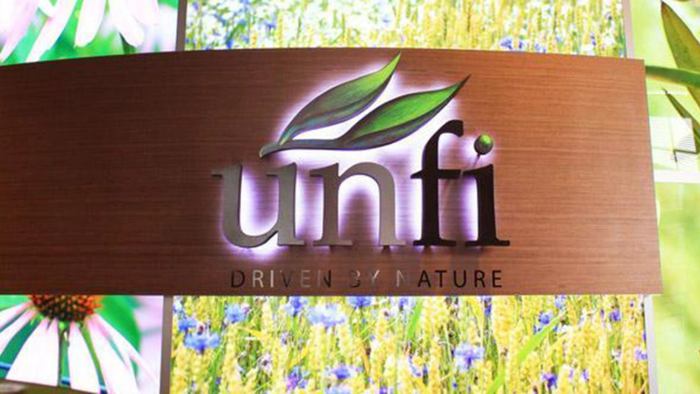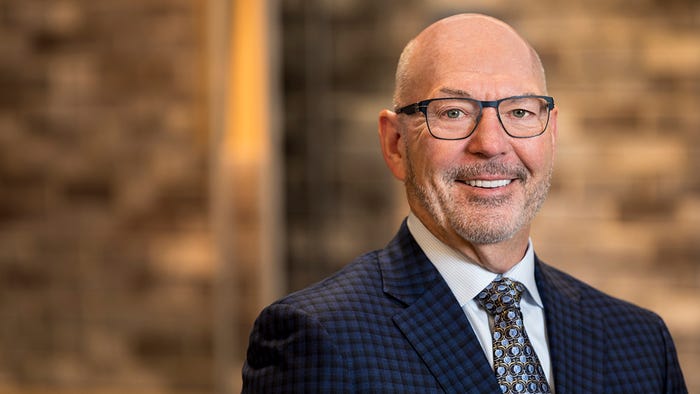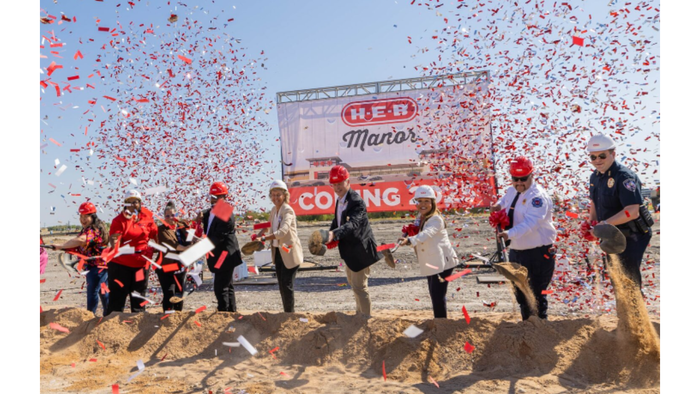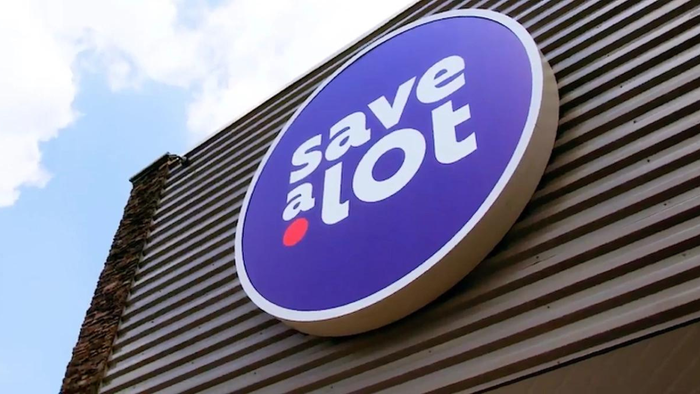Reeling in sales
January 1, 2018
The International Boston Seafood Show offered a boatload of new products and merchandising ideas. By Richard Turcsik Someone should have called the Harbor Patrol. They were the only ones with the wherewithal to help navigate the record-breaking traffic that flooded the floor of the Boston Convention & Exhibition Center in mid-March. Retailers packed the aisles like sardines to check out the latest and greatest from the sea at the 2011 International Boston Seafood Show/Seafood Processing America convention. Several exhibitors told Grocery Headquarters that this was the best-attended show in years. Linda L. Bean, owner of Port Clyde, Maine-based Linda Bean’s Perfect Maine Lobster, excitedly rattled off a list of the big-name retailers that stopped by her booth, tucked away in a cove on Aisle 100: “Costco, Sam’s Club, Kroger—and that was just during the [show’s] first hour.” They were inquiring about her new Linda Bean’s Perfect Maine Lobster Cuddlers—frozen, cooked, pre-scored lobster claws. “I’m hoping they will be like chicken tenders and people will picture it as a scored claw in a shell,” she said, adding that they are taken from the boat to the processing plant in about 20 minutes. “Our brand opens doors and we would like to make [lobster] more affordable and accessible everywhere we go,” she said. Seafood America is doing its part to make seafood more delectable with its new Tapas Tonite line of hors d’ouevres/small portion meals, including items such as shrimp with coconut crab stuffing and olive tapenade shrimp. “We saw a trend in California two or three years ago where people were eating smaller-portion items for healthier eating [and pairing them] with a salad,” explained James Burke, Jr., vice president of business development at the Warminster, Pa.-based firm. “We think the time is right to do this across the country and based on the reaction we’re getting at the show we are really excited. They are frozen, uncooked, which is a different niche for us,” he said, adding that the line will eventually encompass about 18 items. Robby Brandano, the CEO of Boston-based Maristella’s Fine Foods, was creating his own niche by sampling his seafood-based Arancini Sicilian rice balls along with prototypes of his upcoming line of seafood pot pies. “We just launched in March at the Raleigh, N.C., Whole Foods Market grand opening and they are taking it region-wide in the Atlanta region,” he said. “We’re creating five different flavors of the Arancini and we’re going to have seven variations of pies, including three with meat,” he said, adding that the actual pot pie will be 13-oz. in a bakeable tray. “We’re a small, new company open to ideas and [ready] to work with buyers and consumers to create new flavors to see where the trends are going, and we will just build from there,” Brandano added. Not every booth offered samples. Officials at some booths were touting food safety initiatives. Phil Werdal, CEO of Trace Register, was talking about his Seattle-based company’s traceability system. “You often hear about traceability from the boat to the plate and that is what we do,” he said, explaining that he offers an online software application in which each link in the chain uploads the information. “We have a number of retailers that use Trace Register now and they are asking their seafood supply chains to implement it. The retailers are pretty much the drivers of this movement.” “Buy local” was the catchphrase of the day at booths run by state associations. “The big thing we are promoting this year is sustainability,” said Larry Andrews, retail marketing director in the Seattle office of the Juneau, Alaska-based Alaska Seafood Marketing Institute. Down south a ways, Bill Woodfield, chairman of the Annapolis, Md.-based Maryland Seafood Commission was touting the benefits of Chesapeake Bay crabs and oysters over imports to passersby. “We have three crab companies and an oyster company at our booth this year and we’re promoting all kinds of seafood from Maryland,” he said. This year Louisiana Seafood expanded its booth from a 10-foot-by-20-foot in-aisle spot to a massive pavilion, complete with fish tanks filled with live crabs and shrimp. “We launched a whole new brand identity in the wake of the oil spill crisis,” said Rene LeBreton, assistant executive director of the New Orleans-based association. “People are seeing that in our new booth. People are looking for fresher and cleaner and we have a different image that we want to convey now. The live shrimp is something you don’t see anywhere else in the show. They are turning heads,” he said. Across the aisle, crowds were forming at the Catfish Farmers of America booth, where catfish had jumped out of the frying pan and into a bath of flavorful light mustard mango sauce that company officials say is more representative of today’s healthy lifestyle. “Catfish is a mainstay in a lot of the Southern states and across the country, and I just think the way that we are presenting it today highlights the versatility of the product,” said Roger Barlow, executive vice president of the Indianola, Miss.-based trade association. Barlow had a message for retailers thinking of switching from American catfish to cheaper imports from Vietnam and other parts of Asia. “I think the No. 1 thing we have going for us is such a loyal consumer,” he said. “Consumers understand that there is a difference and they ask for U.S. farm-raised that is grown by American farmers and is an American fish.” In the salmon pink Beth Poole, executive director of the Cordova, Alaska-based Copper River/Prince William Sound Marketing Association, was reeling in attendees with free chocolate salmon lollipops. Once caught, she touted the benefits of fresh Alaskan Copper River salmon, which is available mid-May through September. “We’re representing the fishermen and processors of the Copper River and Prince William Sound area,” she said. “We have species profiles, recipe cards and harvest information about the season coming up.” At the Scotland pavilion, Philip Jones, vice president, East Region for Scottish Development International, the New York-based arm of the Scottish government that promotes Scotland across a number of sectors, including food and drink, said his members were using the show to break into the U.S. market. “We have salmon companies here for smoked and fresh salmon. For us this show is about helping them understand the U.S. market, meet U.S. buyers and retailers and understand the trends and development of new products, and how they can market the product into the American market,” he said. “It is only a 24-hour turnaround from when the fish is harvested to when it is flown out of either Glasgow or Heathrow,” said Rosanna Osborne, marketing executive at The Scottish Salmon Co., one of the companies in the Scottish Development International booth. “We’ve been asking companies what they think of Scottish salmon and quite a few said they think of it as a high-end premium item, which for us is great to hear,” she added. While everyone has heard of Scotland, the stylish shopping bags given away at the show’s entrances only helped to enhance the mystery surrounding Salmon from the Faroe Islands. “The Faroe Islands is located between Iceland and Norway,” said Arni Olsen, project manager for Salmon from the Faroe Islands. “It is a very small country and we have our own language and are an independent part of Denmark. And we produce the world’s best salmon. We produce more than one ton of salmon per inhabitant because the natural conditions for salmon are so good in the Faroe Islands. The sushi industry in the U.S. has a preference for salmon from the Faroe Islands because the fat content in our salmon is higher than in others, and we are very good at producing big salmon that are 6-plus pounds.” John Jordan, president of Portland, Maine-based Calendar Islands Maine Lobster, was showcasing his frozen Lobster Pizza and Lobster Mac & Cheese and soups, which have been picked up by Hannaford Bros. stores. “What’s unique about our company is that it is owned by 38 Maine lobstermen,” he said. “We’re presenting items that are high-quality, restaurant-experience that can be enjoyed at home. Our company has become an unexpected partnership between fishermen and investors—foodies, including Stonewall Kitchen and Robert Levy, a former food critic for The Boston Globe. Everything about this company is about our partnership. We represent harvesters in our industry who have never had any connection with what happens after the lobster leaves the boat. Everything about our company is quality.” Jordan sees his company courting more lobstermen as the business takes off. “We really want to reach out to other lobstermen in the business, similar to an Ocean Spray or Florida’s Natural model,” he said.
About the Author
You May Also Like




